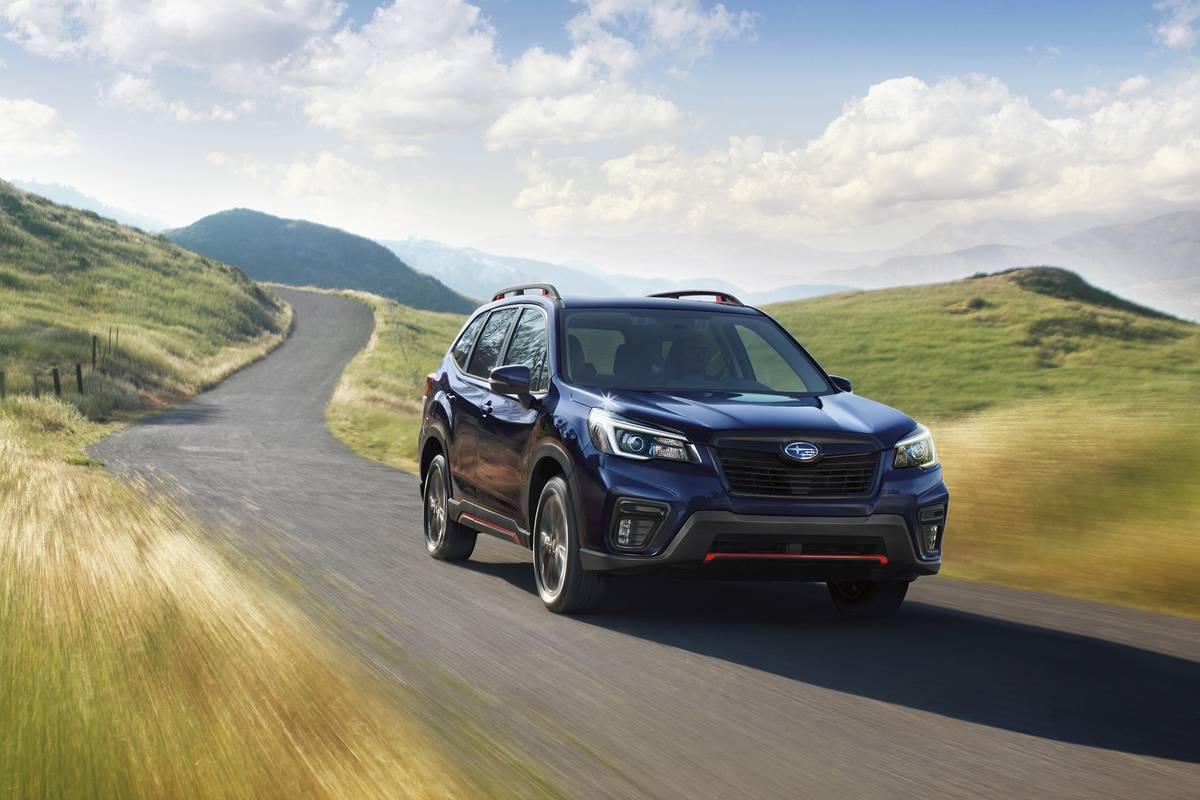Most significant changes: Adaptive LED headlights and high-beam assist are standard on base and Premium models, and all models gain a standard rear seat belt reminder.
Price change: $340 to $440
On sale: October
Which should you buy, 2020 or 2021? 2021 if you’re buying a base or Premium model, and a coin flip for the others. The addition of standard adaptive LED headlights offsets the price increases on the 2021 base and Premium models, but no major additions exist for other trims.
Related: What’s the Best compact SUV of 2019?
Subaru’s compact, five-seat 2021 Forester SUV receives minimal changes and modest price increases for the second year in a row after it was redesigned for the 2019 model year.
The Forester’s base and Premium trim levels add standard adaptive LED headlights that swivel in the direction of turns and have an automatic high-beam function. Those features were already standard on the Sport, Limited and Touring models. All models also add a standard rear seat belt reminder that nudges backseat occupants to buckle up.
Including a $40 increase in the destination charge, prices climb $340 on the base, Limited and Touring models, and $440 higher on the Premium and Sport.
That means a base Forester now starts at $25,845 and the Premium at $28,845 (all prices include destination). Moving to the higher trim levels elevates the price above $30,000. The Sport starts at $30,445, the Limited at $32,445 and the Touring at $35,945.
There is only one factory option package for all models except the Touring, which has no factory package, so the bottom line can’t climb by leaps and bounds (though several dealer-installed accessories are available that can pad the price). For example, the only factory options on the base model are alloy wheels and roof rails, which run $600 for both. On the Limited, the sole option is a $1,695 package with reverse automatic braking, an 8-inch navigation system, Harman Kardon premium audio and a few other amenities.
All models come with a 182-horsepower, 2.5-liter four-cylinder engine with horizontally opposed cylinders, a continuously variable automatic transmission and all-wheel drive. Subaru’s EyeSight safety suite, which in the Forester includes automatic emergency front braking, lane departure warning, lane-centering steering and adaptive cruise control, is standard across the board.
The Forester shares many practical attributes found on other Subaru SUVs, including standard AWD, a roomy interior, a functional cargo area that’s easy to load and comfortable ride quality. It also shares some of Subaru’s common shortcomings, such as a coarse-sounding engine that makes more noise than power when you need a burst of acceleration.
The styling is unlikely to raise any emotions, and neither is the performance. The Forester scores a lot of points for practicality and functionality, including light off-road capability, making it a credible choice among five-passenger compact SUVs.
More From Cars.com:
- 2019 Compact SUV Challenge: How Do the CR-V, Rogue and Others Compare to the Tiguan?
- Who Makes Subaru?
- 2020 Subaru Outback First Drive: Your Budget Volvo CrossCountry Has Arrived
- Subaru Outback: Which Should You Buy, 2020 or 2021?
- Subaru Legacy: Which Should You Buy, 2020 or 2021?
Cars.com’s Editorial department is your source for automotive news and reviews. In line with Cars.com’s long-standing ethics policy, editors and reviewers don’t accept gifts or free trips from automakers. The Editorial department is independent of Cars.com’s advertising, sales and sponsored content departments.
Source: Read Full Article

